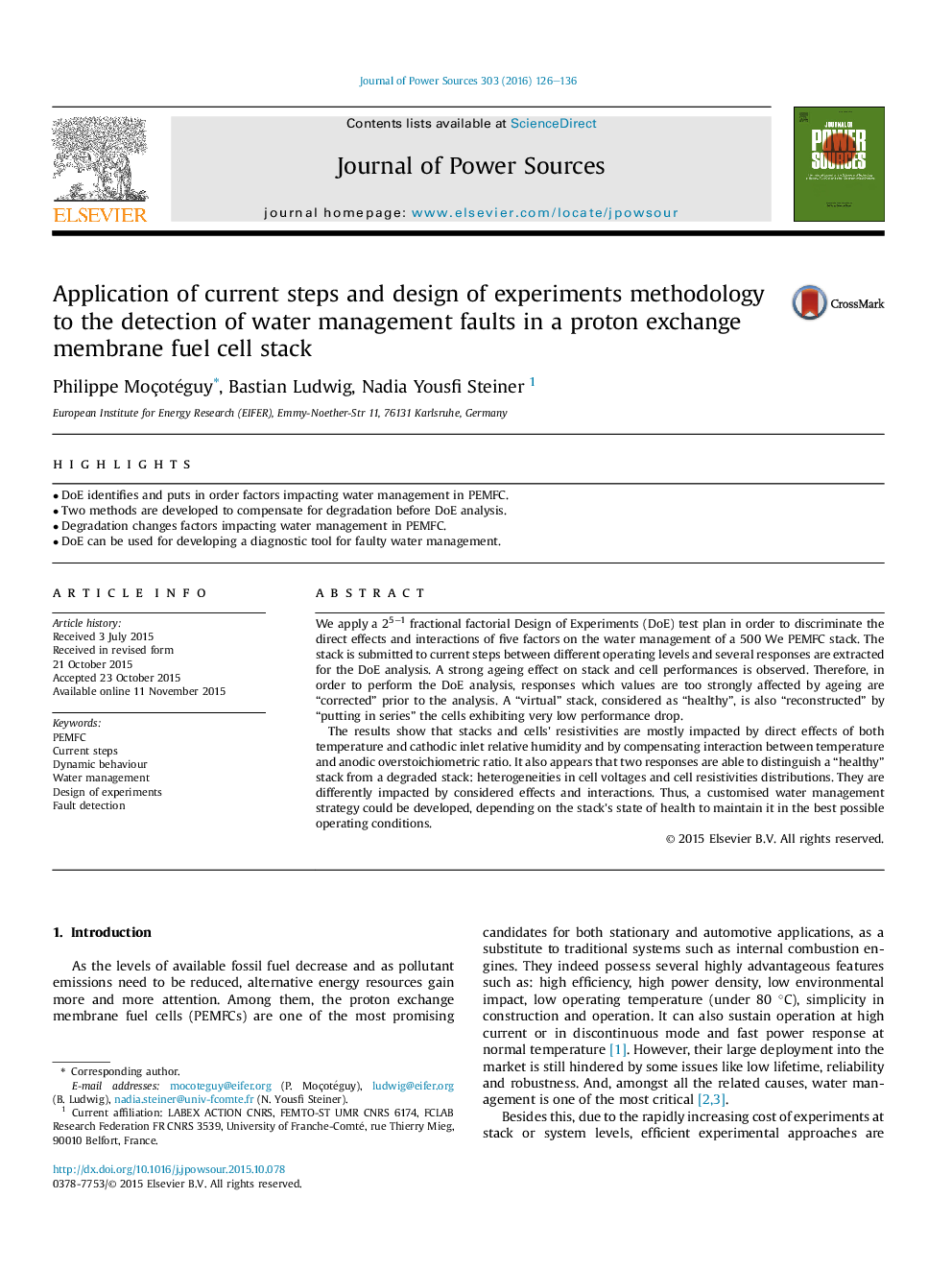| Article ID | Journal | Published Year | Pages | File Type |
|---|---|---|---|---|
| 1285718 | Journal of Power Sources | 2016 | 11 Pages |
•DoE identifies and puts in order factors impacting water management in PEMFC.•Two methods are developed to compensate for degradation before DoE analysis.•Degradation changes factors impacting water management in PEMFC.•DoE can be used for developing a diagnostic tool for faulty water management.
We apply a 25−1 fractional factorial Design of Experiments (DoE) test plan in order to discriminate the direct effects and interactions of five factors on the water management of a 500 We PEMFC stack. The stack is submitted to current steps between different operating levels and several responses are extracted for the DoE analysis. A strong ageing effect on stack and cell performances is observed. Therefore, in order to perform the DoE analysis, responses which values are too strongly affected by ageing are “corrected” prior to the analysis. A “virtual” stack, considered as “healthy”, is also “reconstructed” by “putting in series” the cells exhibiting very low performance drop.The results show that stacks and cells' resistivities are mostly impacted by direct effects of both temperature and cathodic inlet relative humidity and by compensating interaction between temperature and anodic overstoichiometric ratio. It also appears that two responses are able to distinguish a “healthy” stack from a degraded stack: heterogeneities in cell voltages and cell resistivities distributions. They are differently impacted by considered effects and interactions. Thus, a customised water management strategy could be developed, depending on the stack's state of health to maintain it in the best possible operating conditions.
